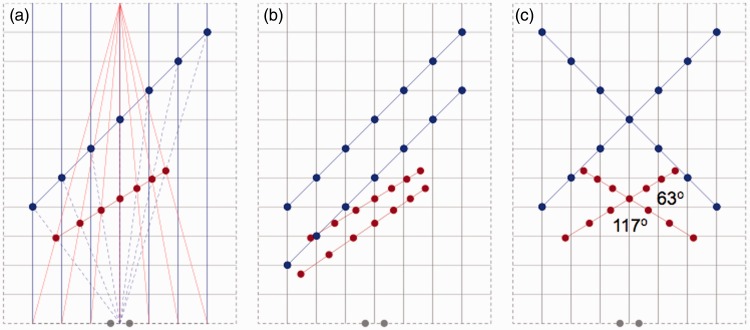Figure 1.
Transformations from physical to perspective space. Panels show stimuli (blue dots and lines) in a plane of physical space and their equivalents in perspective space (red dots and lines). Gray dots indicate the positions of the eyes. Panel (a) shows a set of seven dots (blue) arranged along a straight line in physical space. The dots are lying on equidistant lines (blue) that vanish at infinity in the straight-ahead viewing direction. In perspective space the lines (red) converge to a finite vanishing point. Dots have identical egocentric directions in physical and perspective space (dashed blue lines). Panel (b) shows dots (blue) arranged along two parallel lines in physical space and their equivalents (red) in perspective space. Panel (c) shows dots (blue) arranged along two orthogonal lines in physical space and their non-orthogonal equivalents (red) in perspective space. For reasons of clarity the underlying directional and perspective lines are not drawn in panels (b) and (c).

